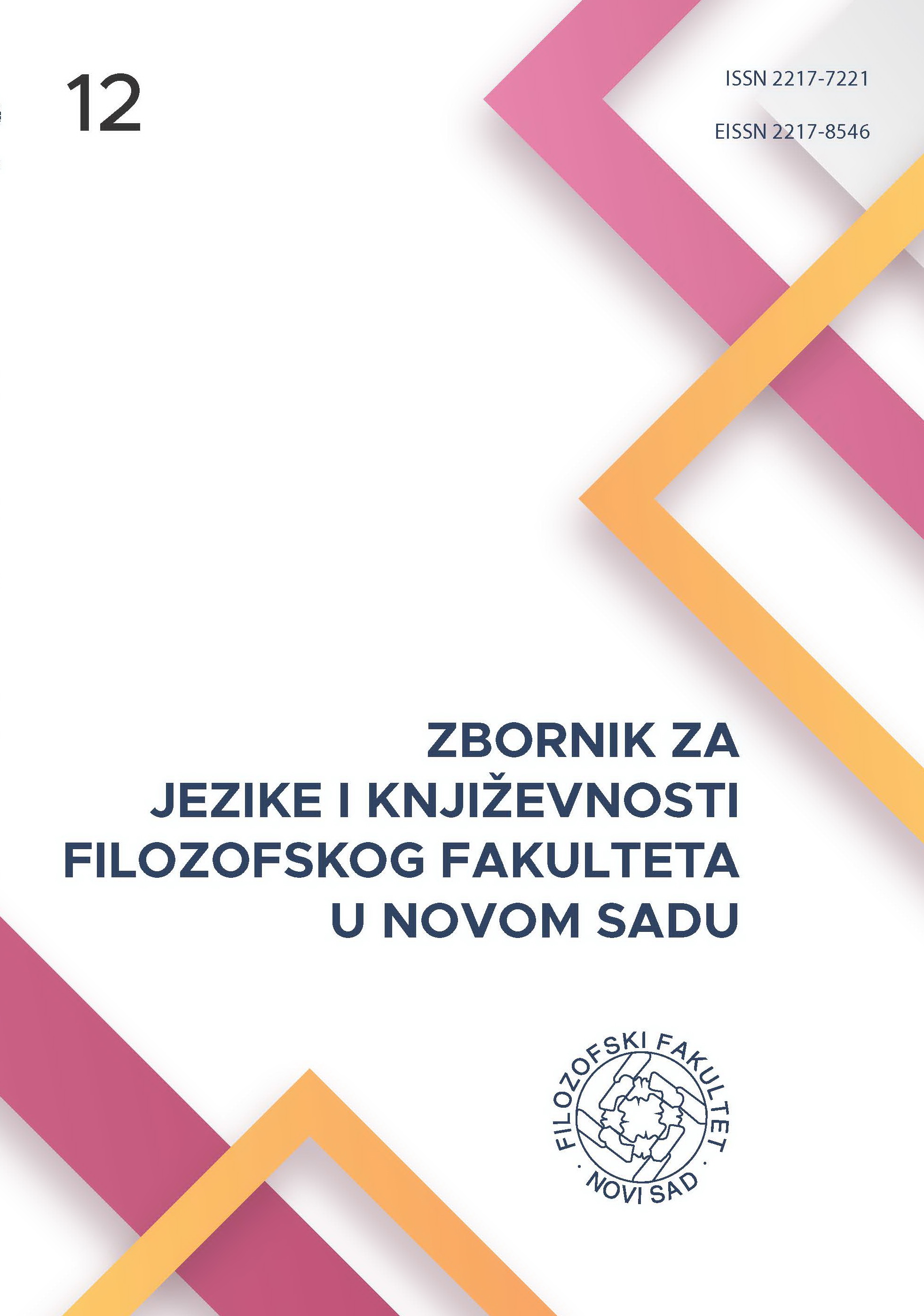UTICAJ JEZIKA NA PERCEPCIJU REALNOSTI LIKOVA U DELU VAVILON 17 SEMJUELA DILEJNIJA
Apstrakt
Ovaj rad se bavi značajem veštačkih jezika u u romanu Semjuela Dilejnija, Babel-17. Analizirala sam na koji način veštački jezik pod nazivom Babel-17 utiče na likove koji ga razumeju ‒ kako briše njihov lični identitet kroz nepostojanje ličnih zamenica, i kako menja njihovo ponašanje i razmišljanje.
Drugi veštački jezici u romanu su takođe bitni za analizu. Oni pokazuju koliko teško može biti uspostaviti komunikaciju između govornika različitih jezika, posebno „vanzemaljskih“. Čak i najjednostavniji izrazi mogu zahtevati mnogo više napora da bi se precizno preveli. Ovo je posebno izraženo u situacijama kada nema ekvivalentnih izraza, pa je potrebno mnogo više opisnih detalja da bi se došlo do razumljive ideje.
Takođe, da bi se uspostavila uspešna komunikacija u romanu, likovima nije dovoljno znati jezik ‒ potrebno je poznavati i sopstveni identitet. Samo tada su sposobni da razumeju druge likove, posebno kada postoji velika razlika u kulturi i manjak iskustva sa pripadnicima tih drugih kultura.
Kroz analizu veštačkih jezika i njihovih govornika u romanu, možemo doći do zaključka da znati jezik ne podrazumeva samo sposobnost komunikacije sa govornicima tog jezika. Kroz jezik takođe imamo uvid u njihovu percepciju stvarnosti, pa i detalje iz svakodnevnog života.
Reference
Delany, S. R. (2001[1966]). Babel-17. New York: Vintage.
Disch, T. M. (1975). Die Feuerteufel (The Genocides, dt.) Science Fiction-Roman.
Elgin, S. H. (2019). Native tongue. Feminist Press at CUNY.
Embry, J. M. (2009). Nam-Shub versus the Big Other: Revising the Language that Binds Us in Philip K. Dick, Neal Stephenson, Samuel R. Delany, and Chuck Palahniuk. Diss. Georgia State U. Web.
Friedman, S. (2009). Language as a Familiar Alien in Science Fiction or, as Riddley Walker Would Ask, Wie Wood Eye Both Err Two Reed This? University of Michigan. B. A. degree thesis.
Gallagher, R. (1986). Science Fiction and Language: Language and the Imagination in Post-War Science Fiction. University of Warwick. PhD dissertation.
Haden Elgin, S. Láadan, the Constructed Language in Native Tongue, by Suzette Haden Elgin. Láadan, the Constructed Language in Native Tongue. Retrieved January 20, 2022, from
www.sfwa.org/members/elgin/Laadan.html
Kim, I. (2006). Linguistics in postmodern science fiction: Delany’s Babel 17 and Stephenson’s Snow Crash. English Language & Literature Teaching, 12(2), 41‒59.
Kubrick, S. et al. (1972). A Clockwork Orange. Ballantine Books.
Merrick, H. (2009). FICTION, 1964–1979. Routledge.
Mohr, D. (2009). The Tower of Babble? The Role and Function of Fictive Languages in Utopian and Dystopian Fiction. In Pordzik, R. (Ed.), Futurescapes: Space in Utopian and Science Fiction Discourses (pp. 225‒250). Amsterdam: Rodopi.
Orwell, G. (1950). 1984. New York: Signet Classic.
Steble, J. New Wave Science Fiction and the Exhaustion of the Utopian/Dystopian Dialectic. ELOPE: English Language Overseas Perspectives and Enquiries, 8. 2. 2011, 89‒103.
Sapir, E. (1921). Language: An Introduction to the Study of Speech. Harcourt: Brace.
Whorf, B. & Carroll, J. B. (Eds.) (1956). Language, Thought, and Reality: Selected Writings of Benjamin Lee Whorf.




